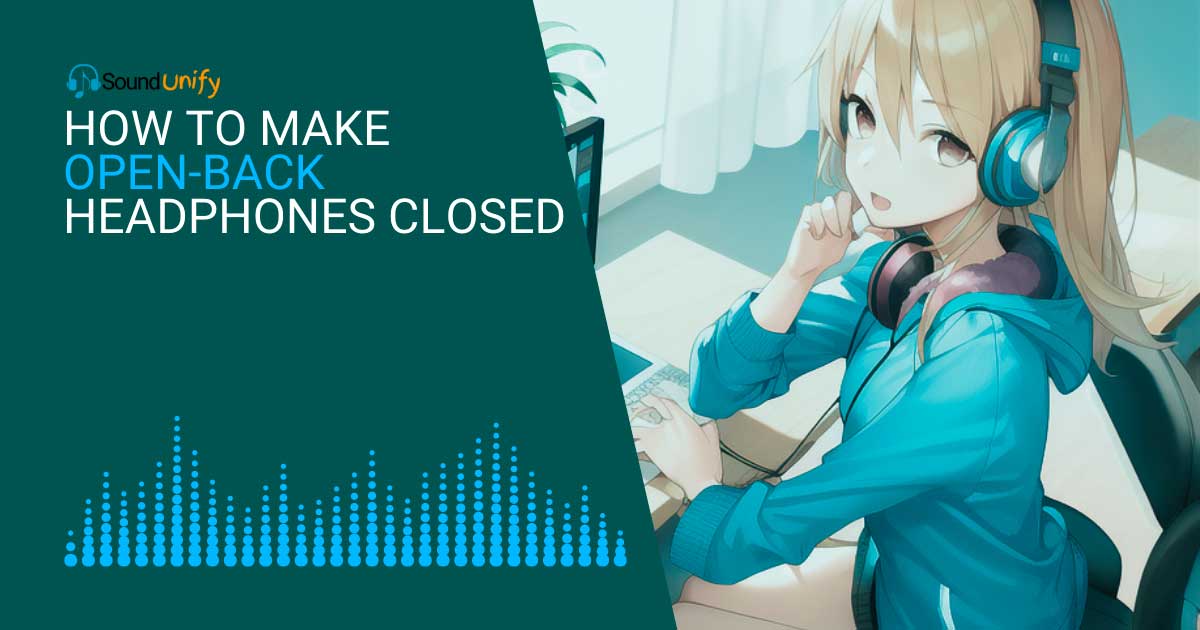As a headphone enthusiast, I love open-back headphones for their incredible soundstage and airy feel. But sometimes, I need the sound isolation of closed-back headphones, like when I’m in a noisy environment or listening to music late at night.
That’s why I was so excited to learn that you can turn an open-back headphone into a closed-back one with just a few simple steps. After researching, I discovered an easy way to convert my open-back headphones into closed-back ones without buying a new pair.
In this article, I’ll share exactly how to make open-back headphones closed so you can enjoy your audio experience without worrying about sound leakage.
Can You Make Closed-Back Headphones into Open-Back?
Yes, it is possible to convert closed-back headphones into open-back. The process involves more than converting open-back to closed-back headphones, but I can do it. You will need to remove the material used to close off the earcups, such as foam or a plastic panel, and replace it with a vent to allow sound to pass through.
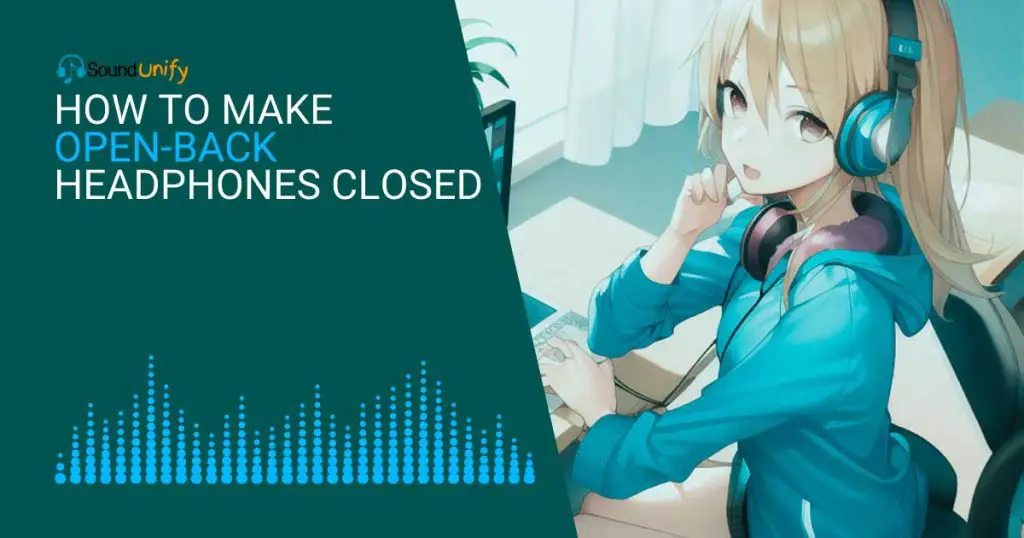
How to Make Open-Back Headphones Closed?
There are many DIY methods. One of the most popular ways is using foam or fabric to create a makeshift ear cup that helps block out external noise and make your headphones sound more like traditional closed-back models.
Step 1: Choose the Right Materials
The materials you choose are essential to achieving the best results.
- Firstly, you need fabric that’s thick enough to block out sound. The material should be acoustically transparent, meaning that it should let sound through but not enough to affect the quality of the sound.
- A light, breathable material is best, such as wool, cotton, or even acoustic foam, as these fabrics don’t interfere with sound.
Step 2: Measure and Cut the Fabric
Once you have the appropriate fabric, measure and cut it to fit the size of your headphones. Make sure there are no gaps or spaces between the material and the headphones, as this could affect the audio quality.
Step 3: Attach the Fabric to the Headphones
Now it’s time to attach your fabric to the headphones. There are a few ways to do this,
- You can use adhesive tape.
- Attach the fabric via stitching.
- Use a glue gun.
These should do this method carefully to ensure the fabric is securely attached and won’t come off.
Step 4: Secure and Adjust as Needed
You’ll want to ensure the fabric is securely attached to the headphones and properly adjusted. To do this,
- You can use some hot glue or clamps.
- Depending on your material.
Step 5: Check the Fit and Sound Quality
After the headphones are secured, it’s time to check the fit and sound quality. Be sure to wear the headphones and test them out to see if they feel comfortable and if the sound is satisfactory. You can adjust the tightness if necessary by re-applying the glue or changing the stitching.
Step 6: Enjoy Your Newly Converted Headphones
Now that your headphones have been converted, you can enjoy them and experience the enhanced sound quality of closed-back headphones.
Most important things to consider when making DIY modifications is finding the right size and shape of materials. The size and shape should fit snugly in the ear cup without causing discomfort or pressure points. It's also important to remember that these materials will need to be replaced over time, as they will eventually wear down and break.
How to Make a Diy Headphone Cover Using Fabric, Foam, and Elastic?
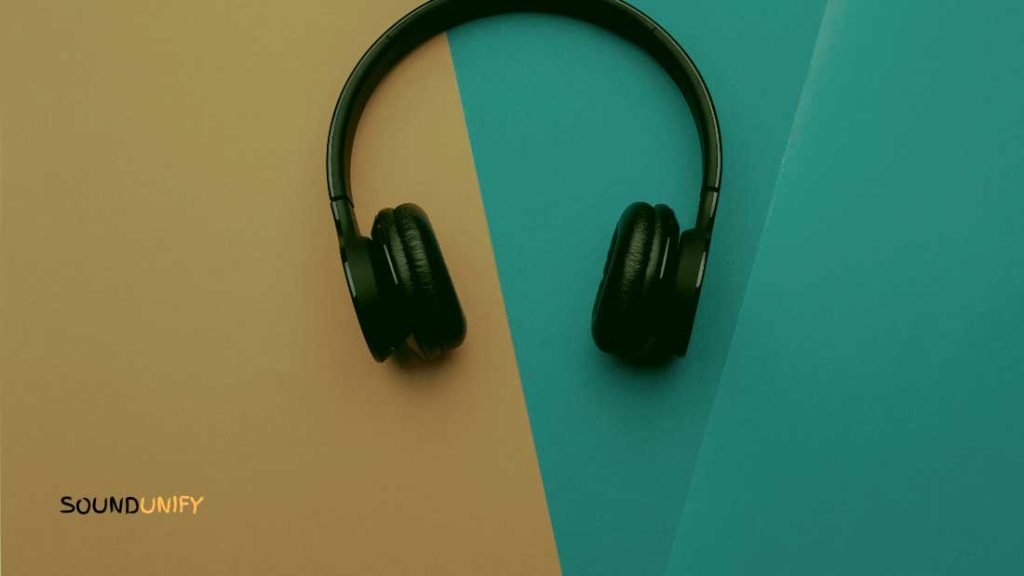
Making a DIY headphone cover to convert your open-back headphones to closed-back is an easy and affordable way to get the sound you want. You can customize your listening experience for any situation with just a few simple steps.
The first step is gathering the materials. You’ll need fabric, foam, and elastic.
- The fabric should be strong enough to hold its shape when stretched over the headphones while allowing air to pass through them.
- The foam should be thick enough to provide adequate padding and insulation from outside noise while providing comfort for your ears.
- Elastic should be stretchy enough to wrap around the headphone cup’s edges but not so tight that it affects the sound quality or causes discomfort.
Once you’ve gathered all your materials, you’ll need to cut them into pieces suitable for covering the headphones.
- The dimensions will vary depending on the size and shape of your headphones. Still, two rectangular pieces of fabric should be large enough to cover both sides of the headphones, with extra room left at the edges for attaching elastic bands later on.
- Cut a piece of foam into two smaller rectangles slightly larger than the pieces of fabric. These will cushion your ears when wearing them. Lastly, cut two lengths of elastic long enough to fit around each side of the headphone cup without being too loose or tight. This will determine how snugly they do against your head when wearing them.
- Assemble everything by attaching one end of each length of elastic onto one side of the headphone cups using fabric glue or tape before stretching it over both pieces of fabric and securing it on the other side with glue or tape again. This will help keep everything in place once you’re done assembling them.
- If desired, you can use additional foam scraps to paddle around sensitive areas, like where the plastic cups meet your ears. This will help reduce pressure points while listening or speaking on calls comfortably.
- Once all pieces are securely attached, slip them over your headphones and adjust as needed until they fit perfectly. With just a few simple steps and some basic materials, you now have an affordable way to convert open-back headphones into closed-back ones.
Reasons to Make Open Back Closed
1. Open-back headphones closed to reduce sound leakage.
Open-back headphones usually let out sound from the earcup and the headphone grill, meaning that anyone in the same vicinity can hear what you’re listening to.
This may be an issue for people who want to keep their music private or don’t want to disturb those around them.
It may be distracting if someone else listens to their music nearby. Closed-back headphones block some of this sound so that none leaks out, and only the person wearing them can hear what they’re listening to.
2. They are better at blocking out external noise.
When using open-back headphones, sound from outside can leak in and interfere with your music or whatever you are listening to.
With closed-back headphones, your audio will remain isolated from any external noise and won’t be interrupted by anything else going on around you.
3. Closed-backs produce a better bass response.
Since these headphones protect your ears from outside sounds, it ensures that there is no interference when producing deep bass notes, such as when playing hip hop or EDM genres of music.
Furthermore, closed backs help create a sense of immersion in which everything seems more impactful and alive as if you were there live experiencing it first hand.
4. They improve the sound quality of your music.
Closed-back headphones can provide an improved sense of clarity, detail, and realism in your music.
This is mainly because the audio isn’t disturbed by the outside noise, which can interfere with the frequencies of the sound.
5. Closed-back headphones are comfortable to wear.
Since closed-back headphones are designed to seal your ears, they typically feature thicker, more padded ear cups, making them more comfortable than open-back models.
Two Other Methods for Making Open Back Closed
If you’re looking to convert your open-back headphones into closed-back headphones, there are a few different methods that you can use. In this method, you need to spend money.
- The most common method is to purchase a headphone mod kit. These kits typically include all the parts you need to make the conversion, such as foam pads, leather cups, and plastic clips. They also usually come with instructions on assembling and installing the parts.
- You can also opt for third-party solutions such as custom-made covers or earpads tailored to fit your particular model of headphones. Custom covers provide additional comfort and can completely close off the back of the earcup while still allowing air circulation. Earpads are especially useful if you have large ears since they can make in different sizes. Finally, if you’re feeling adventurous, some people make their DIY modifications using materials like fabric, foam, and elastic straps.
Benefits of Converting Open-Back Headphones to Closed-Back
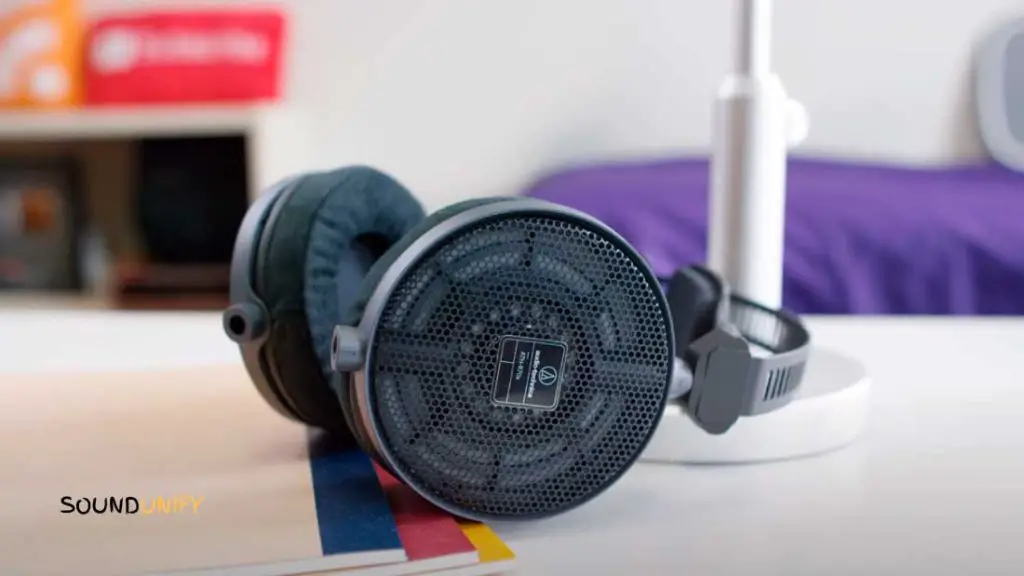
Closing open-back headphones can offer several benefits that make the listening experience much more enjoyable.
Provide better isolation for your music
With open-back headphones, sound can leak out of the back and into your surroundings, potentially interfering with other people’s listening experiences and causing distractions in a shared environment.
The designs prevent this by creating an acoustic seal around your ears, ensuring that you are the only one hearing your music at total volume.
Increasing bass response
This is because the driver of a closed-back headphone is not exposed to outside noise or air pressure, meaning it can deliver stronger low frequencies without interference.
This makes for a powerful and immersive audio experience, especially when listening to genres such as hip-hop or EDM.
Improved sound quality
Closed-back headphones offer better noise cancellation than open-backs. Blocking off the ear cups with padding or foam inserts can significantly reduce outside noise while enjoying your music at a comfortable volume level.
This makes them especially useful in noisy environments like public transportation or busy offices. They can help you stay focused on what you’re doing without worrying about external sounds disrupting your work process.
Tips for Making the Most Out of Your Modded Headphones

Making the most of your modded open-back headphones is about functionality and comfortability. Here are some tips to ensure that you get the best experience out of your newly converted closed-back headphones:
1. Make sure the padding on the earcups is comfortable and secure. It should be thick enough to block outside noise while providing a cozy fit. Try using memory foam or other specialized materials to increase the comfort level of your headphones.
2. Adjust the headband tension, so it’s snug but not too tight. Too much tension can cause pain in your head and neck after extended listening sessions, so make sure to find an optimal balance between comfort and function.
3. Consider adding acoustic foam or cotton insulation to reduce sound leakage from your headphones. This will help keep your music confined to you and maximize the audio output quality from your modded headphones.
4. Take care when handling your headphones, as they are more susceptible to damage due to their modified design than traditional open-back models. Be gentle when folding them for storage, and always use a protective case when carrying them around with you on the go!
5. Experiment with positioning techniques such as angling the earpieces outward slightly, which can improve soundstage depth and provide better separation between instruments in specific genres of music, like classical or jazz recordings.
These tips should help you make the most of your modded open-back headphones and enjoy a comfortable listening experience without compromising sound quality.
Troubleshooting Common Issues With Closed-Back Headphones
When troubleshooting common issues with closed-back headphones, the key is to know what you’re dealing with before attempting any modifications. Closed-back headphones are designed to block outside noise and provide a more immersive sound experience. However, users may need help with using this type of headphone.
Sound leakage
One of the most common problems is sound leakage. This occurs when sound from your headphones leaks out and can be heard by those around you.
To minimize this risk, make sure your headphones fit properly and securely. If they are too loose or uncomfortable, then this can cause sound to leak out.
It’s also essential to ensure that the earcups are correctly sealed so that no sound escapes through the sides or back of your head.
Additionally, if you’re using an amplifier with your headphones, make sure it’s set at an appropriate volume level not to increase the risk of sound leakage.
Bass response
Another issue with closed-back headphones is the need for bass response. This can occur due to insufficient dampening material inside the earcups or a lack of an airtight seal between them and your head.
Add more dampening material, such as foam or cotton batting, to improve bass response inside the earcups.
Alternatively, you could purchase replacement earpads that offer better insulation against outside noise interference and enhanced bass response.
Distortion
Distortion can also be an issue with closed-back headphones if they don’t have enough power behind them or if they have been driven too hard by an amplifier or other device.
If distortion becomes a problem, reduce the volume or invest in a higher-quality amplifier to help drive your headphone’s performance more evenly over its entire frequency range without causing distortion or compression problems.
Overall, troubleshooting common issues with closed-back headphones requires knowledge about what’s causing each problem and how best to fix it for optimal performance levels.
With proper care and maintenance, you should be able to get many years out of your closed-back headphones without running into too many problems.
Open-Back vs. Closed-Back Headphones
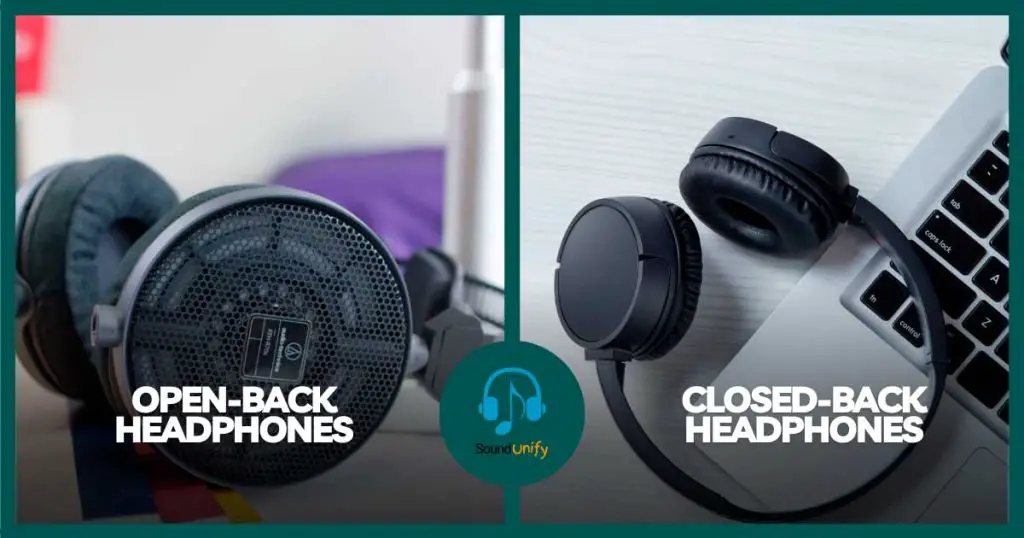
Open-back headphones are designed to provide a more natural sound than closed-back models. Open-back headphones allow the sound to escape, creating a more open and spacious soundstage.
While closed-back headphones trap the audio and make an enclosed, more direct listening experience.
The main difference between open-back and closed-back headphones is the design of their earcups. The earcups of open-back headphones have vents or perforations that allow sound to pass through them, allowing for a wider range of sounds to be heard.
This makes them ideal for genres such as classical music and jazz, where details matter most, and you want to hear every aspect of the recording.
It’s beneficial to those who want to experience the “room” or “ambiance” of a recording or performance space when listening at home.
On the other hand, closed-back headphones block out external noise by containing all of the audio inside the earcups. This makes them ideal for genres like rock and hip-hop.
Punchy bass and powerful beats are preferred over subtle nuances in a recording. Closed-back also better isolates your music from outside sources. So no one else hears what you’re listening to.
| Feature | Open-Back Headphones | Closed-Back Headphones |
|---|---|---|
| Soundstage | Wide | Narrow |
| Sound Leakage | High | Low |
| Comfort | Good for extended wear | Good for shorter wear |
| Noise Isolation | Poor | Good |
| Bass Response | Natural | Enhanced |
| Ideal Use | Studio mixing, home listening | Portable use, noisy environments |
| Sound Signature | Neutral, balanced | V-shaped, bass-heavy |
| Price | Generally more expensive | Generally more affordable |
| Impedance | Typically higher | Typically lower |
| Durability | Less durable | More durable |
FAQ
What’s the point of open-back headphones?
Open-back headphones are designed to provide a more open, natural sound than closed-back models. The sound escapes through vents or perforations in the ear cups, allowing the listener to get a better sense of the soundstage, atmosphere, and clarity of the recording.
Is it easy to turn open-back headphones into closed-back?
Yes, it is relatively easy to convert open-back headphones into closed-back ones. The most common way is to buy and install a headphone mod kit, which typically includes all the materials you need to make the conversion and instructions on assembling and installing the parts.
Can closed-back headphones provide better sound quality than open-back?
Yes, closed-back headphones can provide better sound quality than open-back. This is because the sound is not disturbed by outside noise, creating a more immersive and realistic audio experience. Closed-back headphones are better at blocking external noise and can provide improved clarity, detail, and bass response.
Why are high-end headphones open back?
High-end headphones are designed with open-back earcups because this allows sound to reverberate freely between the earpads, creating a more natural soundstage and enhanced stereo imaging.
How do you know if headphones are closed-back?
You can usually tell if headphones are closed-back because the earcups have a more solid construction, often with no perforations (like on open-back models). Also, it’s possible to feel a slight suction effect when wearing closed-back headphones, as they create an airtight seal that keeps sound from escaping the earcups.
Conclusion
Opening open-back headphones is possible and can do with suitable materials and knowledge. It can be tricky, but with the proper instructions, you can easily make your closed-back headphones.
Don’t let your open-back headphones limit your listening experience. Take the first step and make them closed! With a little effort and some DIY know-how, you’ll soon enjoy improved sound quality from your favorite songs.
James Dimento is a Chief-in-Editor of SoundUnify. He is a headphone enthusiast and creative writer passionate about audio technology. He has three years of experience writing about headphones and sound quality and is responsible for creating reviews and taking care of all administration.
